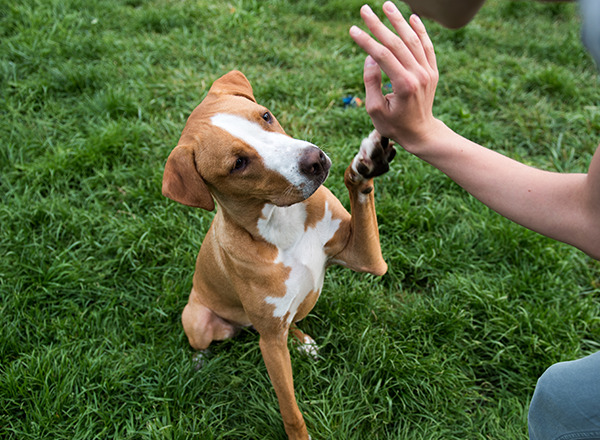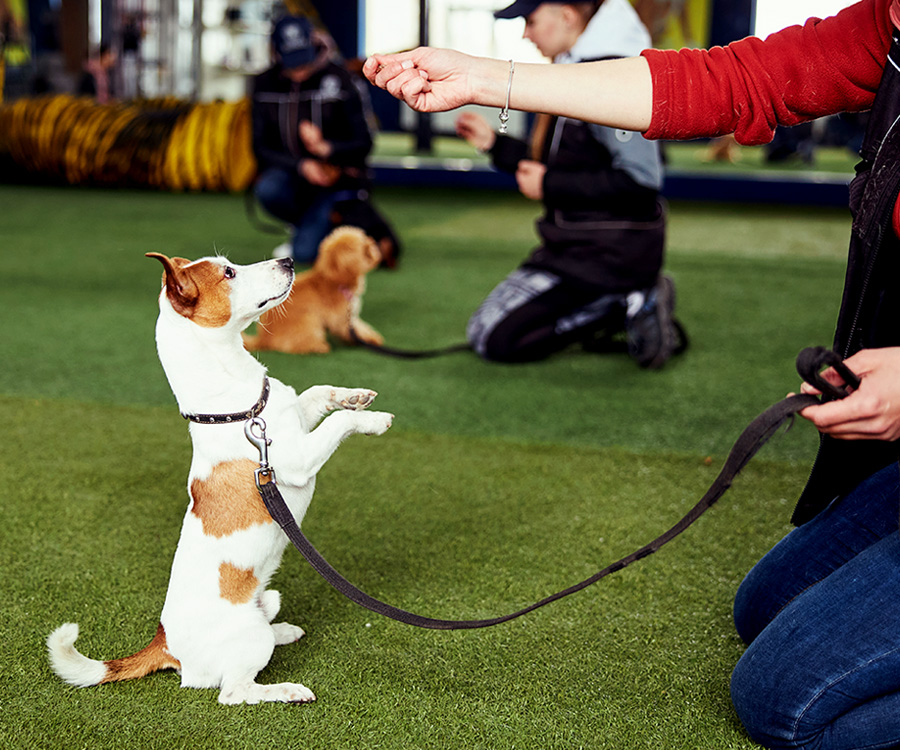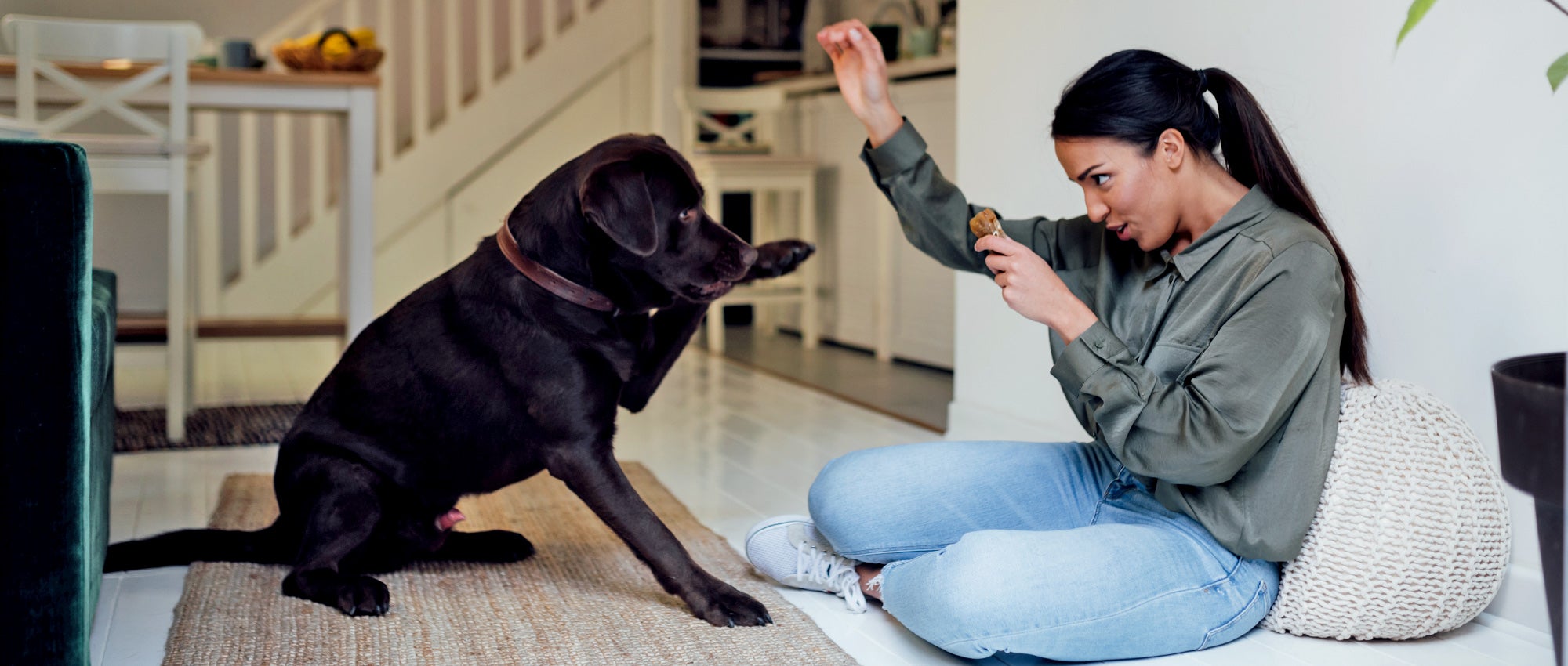How to Include Games into Your Dog Training Regimen
How to Include Games into Your Dog Training Regimen
Blog Article
Vital Tips for Successful Dog Training: An Overview for Pet Owners
Reliable pet training is a diverse process that calls for a calculated technique tailored to both the pet dog's character and the owner's purposes. Comprehending how to browse these challenges can substantially enhance the training experience, inevitably changing the relationship in between owner and pet dog.
Recognizing Canine Behavior
Recognizing canine actions is essential for reliable training and cultivating a harmonious relationship in between dogs and their owners. Pets communicate mostly through body movement, vocalizations, and activities, making it important for proprietors to interpret these signals properly. Acknowledging a pet's posture, tail setting, and ear alignment can give insights into its psychological state. As an example, a wagging tail does not constantly indicate joy; it can additionally signal enjoyment or stress and anxiety.

Socializing plays a substantial function in pet dog habits; exposure to various environments, individuals, and other animals can considerably impact a dog's character. In addition, variables such as breed attributes and private temperament ought to direct training methods, as some types might have certain behavior attributes that require tailored approaches. By comprehending these elements, owners can develop a supportive setting that urges positive habits, bring about successful training outcomes and a much deeper bond with their pet dogs.
Developing Consistent Commands
Reliable communication with your pet starts with establishing regular commands. This foundational component of training is vital for promoting understanding in between you and your family pet. Uniformity in the commands you use makes certain that your canine can reliably link particular words or expressions with the desired habits.
When choosing commands, pick clear, distinct words that are simple to set apart and claim from each other. Stay clear of using similar-sounding commands that might confuse your pet dog. Using "rest" and "remain" is appropriate, however "rest" and "struck" can lead to misunderstandings.
Furthermore, keep the very same tone and volume for every command. Canines are sensitive to singing hints, so differing your tone can create confusion.
It is similarly important to make certain that all member of the family get on the exact same web page regarding the commands made use of. A united front in command use will prevent mixed signals and enhance the learning procedure.
Positive Reinforcement Techniques
The power of favorable reinforcement in dog training depends on its capacity to motivate preferred behaviors via benefits and appreciation. This strategy is based in the concept that habits adhered to by beneficial outcomes are more probable to be duplicated. By integrating positive support into your training regimen, you can properly form your pet dog's habits in a positive way.
To apply positive reinforcement, it's important to recognize what motivates your pet dog, whether it be treats, playthings, or spoken appreciation. When your pet dog performs a wanted action, such as remaining on command, promptly reward them with a treat or love. This association in between the command and the positive end result strengthens their understanding.
It's critical to timing the rewards properly; providing the support within secs of the desired habits aids your canine make the connection (dog training). Additionally, uniformity my blog is crucial-- make certain that all relative use the exact same commands and benefit systems to stay clear of confusion

Gradually, you can minimize the regularity of treats as your canine discovers the actions, transitioning to commend or periodic incentives. This method not only fosters a strong bond between you and your canine yet additionally advertises a favorable discovering setting, making training a pleasurable experience for both.
Socialization and Communication
Consistently exposing your canine to a variety of atmospheres, individuals, and various other pets is critical for their social advancement. Socializing needs to start early, preferably throughout the essential home window of 3 to 14 weeks, when pups are most responsive to brand-new experiences. Older canines can also profit from recurring socializing initiatives.
Present your pet dog to different settings, such as parks, pet-friendly stores, and metropolitan areas. This exposure aids them adjust to different stimulations, minimizing stress and anxiety and concern actions. Motivate favorable communications with various other canines and people, guaranteeing that these encounters are regulated and safe to cultivate self-confidence.
Use organized playdates with well-mannered dogs, as this can boost your pet dog's social skills and teach them proper actions. Obedience courses and training sessions likewise give exceptional opportunities for socializing, enabling your canine to connect with others in a supervised setting.
Monitor your pet dog's body language throughout interactions, as this will certainly assist you gauge their comfort level. Progressively boost direct exposure to more tough situations while guaranteeing that each experience is positive. A well-socialized canine is extra likely to display well balanced habits, making them a joy to have in any type of setup.
Addressing Common Training Difficulties
Every canine owner will experience training difficulties at some time, despite their pet's age or socializing degree. Determining usual concerns such as stubbornness, diversions, site and fearfulness can assist in establishing reliable approaches for renovation.

Interruptions during training sessions can hinder focus. To battle this, begin training in a silent environment with minimal stimulations. Gradually present disturbances as the pet dog comes to be a lot more efficient in commands. Short, regular training sessions are likewise reliable in preserving interest.
Terror can prevent a pet dog's understanding procedure. Progressive desensitization to the source of fear, coupled with positive support, can assist ease stress and anxiety. Patience is crucial; never ever compel a pet dog into a situation that creates distress, as this may exacerbate the problem.
Eventually, understanding and addressing these usual difficulties with a structured strategy will promote a more efficient training experience, strengthening the bond in between canine and proprietor while promoting effective understanding.
Final Thought
In recap, successful dog training depends on an extensive understanding of canine actions, the facility of constant commands, and the application of positive support techniques. Socialization plays a vital duty in developing well-adjusted pets, while addressing typical training obstacles needs perseverance and adaptability. By carrying out these essential approaches, animal proprietors can foster a strong bond with their pets and promote desirable habits, eventually causing an unified partnership between people and their canine buddies.
Understanding pet dog habits is important for efficient training and fostering an unified partnership in between pooches and their proprietors.Socialization plays a considerable duty in pet behavior; direct exposure to numerous environments, people, and other pets can dramatically impact a pet dog's personality.The power of favorable support in dog training lies in its ability to encourage wanted behaviors through rewards and praise. By integrating favorable reinforcement into your training program, you can successfully form your pet's actions in a positive fashion.
In summary, successful visit dog training relies on a comprehensive understanding of canine behavior, the establishment of regular commands, and the application of favorable support strategies.
Report this page